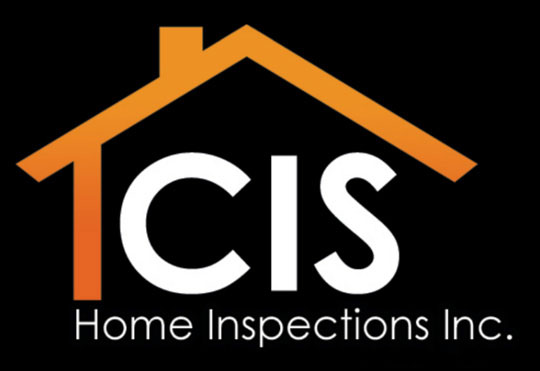EXTERIOR PAGE
Free DIY Home Inspection Checklist
- (*Safety concern) Denotes a Safety Issue which should be considered very important
Walls
STUCCO
- Stucco walls Okay
- Cracks 1/16 – 1/8” (These cracks are considered typical in stucco construction)
- Cracks 1/8-1/4” (DIY TIP: Have contractor evaluate)
- Cracks diagonal at the window or door (DIY TIP: Have contractor evaluate)
- Spalling / deterioration of the stucco covering (*check sprinkler spray and gutter runoff)
- Holes in the stucco wall covering
- Penetrations around pipes and trim needs to be sealed
- Stucco needs to be painted
- The wall was recently painted – may hide damage or previous repairs
- Missing material in large quantity
- Exposed building wrap / paper
- Exposed wood framing (DIY TIP: Have contractor evaluate)
- Bowed wall … vertical / horizontal (DIY TIP: Have contractor evaluate)
- Leaning wall (DIY TIP: Have contractor evaluate)
- Raised Foundation: Cracks in wall at the sill plate level (This may suggest the building has shifted from its attachment to the foundation) (DIY TIP: Have contractor evaluate)
- Raised Foundation: Repairs in wall at sill plate level (raised foundation) (DIY TIP: Have contractor evaluate)
- Large patches in stucco (be aware that the building paper can be damaged when cutting into stucco the stucco wall) (DIY TIP: Have contractor evaluate)
- Doors / windows added into the stucco wall (*be aware that when adding doors and windows into walls may require supports to be placed above the windows or doors as exterior walls are load bearing walls) (DIY TIP: Have contractor evaluate)
- Doors / windows added into the stucco wall – (*be aware that when adding doors and windows into walls may require the cutting into the building envelope or paper wrap which protects the building from moisture entry) (DIY TIP: Have contractor evaluate)
- The weep screed is rusted and deteriorated (be aware that sprinklers may be damaging the weep screed)
- The weep screed is not installed (Weep screeds are designed to drain moisture behind the stucco and in front of the building paper) (DIY TIP: Have contractor evaluate)
- The weep screed has been stuccoed over (wall may not drain properly) (DIY TIP: Have contractor evaluate)
- Large gap between the weep screed and the building
- The bottom of the wall touches the ground i.e. concrete / soil (no weep screed means the wall may not drain sufficiently. This was common practice for older homes 60’s and before) (DIY TIP: Have contractor evaluate)
- Vegetation contact with the walls
WOOD SIDING
- Siding overall: OKAY FAIR POOR
- Siding shows signs of typical or normal wear
- Siding is weathered – needs paint
- Rot was observed in the wood siding
- Missing siding boards
- Loose / warped siding boards
- Exposed building paper (DIY TIP: Have contractor evaluate)
- Wood siding makes contact with the soil or concrete
- Wood siding connections or joints need to be sealed
- Holes and penetrations need to be sealed
- Vegetation contact with wood siding
MASONRY SIDING
- Masonry facing added to the front of the house w/o flashings (DIY TIP: Have contractor evaluate)
- Masonry facing damaged / missing materials
- Masonry material deteriorated
- Sealant is suggested at various penetrations
Siding overall: OKAY FAIR POOR
Trim
WOOD TRIM
- Wood trim Okay
- Wood twisted / weathered needs paint
- Wood Needs to be sealed where connected to the building
- Wood possess dry rot
- Termite damaged wood noted
FOAM TRIM
- Foam trim Okay
- Cracks in foam trim
- Loose foam trim
- The trim was recently painted – may hide damage or previous repairs
- Weathered foam trim
- Trim needs to be sealed to the wall
Electrical
- Electrical Okay
- Are the plugs GFI protected (Safety concern if the exterior plugs are not GROUND FAULT protected)
- Non operational plugs
- Plugs missing cover plates
- Exposed / loose wiring hazard (DIY TIP: Have contractor evaluate)
- Loose or damaged junction boxes (DIY TIP: Have contractor evaluate)
- Light fixtures missing glass
- Loose light fixtures
- Light fixtures need to be sealed where they make contact with the house
- Lights that do not operate. Location(s): ______________________________________________
Barbecue
- BBQ Okay
- Does the BBQ operate Y/N
- Damaged knobs
- Missing parts
- Enclosure / base / built-in is made of wood (DIY TIP: Have contractor evaluate)
- Located under a solid combustible cover (DIY TIP: Have contractor evaluate)
- Located under trees
Fountain
- Fountain Okay
- Does the fountain operate Y/N
- Empty not tested
- Concrete pieces loose
- Plug not GFI protected (DIY TIP: Have contractor evaluate)
Exterior Closets
- Closets okay
- Closets are full and therefore not inspected
- Doors are damaged / weathered
- Doors are hollow core
- Moisture damaged walls within the closet (*DIY TIP: Have contractor evaluate)
Using the FREE Home Inspection Checklist
When inspecting the exterior of the building using the free DIY Home Inspection checklist, one must consider more than just the obvious. In the first place, “typical stucco cracks” may seem like ordinary stucco cracks but this is not always the case. While considering exterior stucco cracking for example, one must also take into consideration lot drainage, grading, interior finish cracking and more in order to determine how significant the cracks actually are. Although the home inspection is a preliminary analysis of the home which is not required to be specialized… still you should at least be aware of the ramifications of not following up on potentially significant issues.
Moisture intrusion testing
In like manner the inspector will want to observe any area where moisture is likely to enter and destroy the building. Of course, now we are speaking to the buildings envelope and its ability to shed water effectively. Never underestimate waters ability to penetrate what you may assume is impenetrable.
On the other hand, let’s not underestimate the cost of neglect. When inspecting you home, one must take into consideration the costs of neglect. For example, if wood trim fascia is rotted and deteriorated around the perimeter of the building, that in and of itself may cost thousands to improve.
Using a General Contractor to help
We always suggest having a general contractor help with the inspection or at the very least, provide a detailed cost breakdown after your inspection of the issues discovered.
MAZZA is Santa Clarita’s Best Home Inspector.






